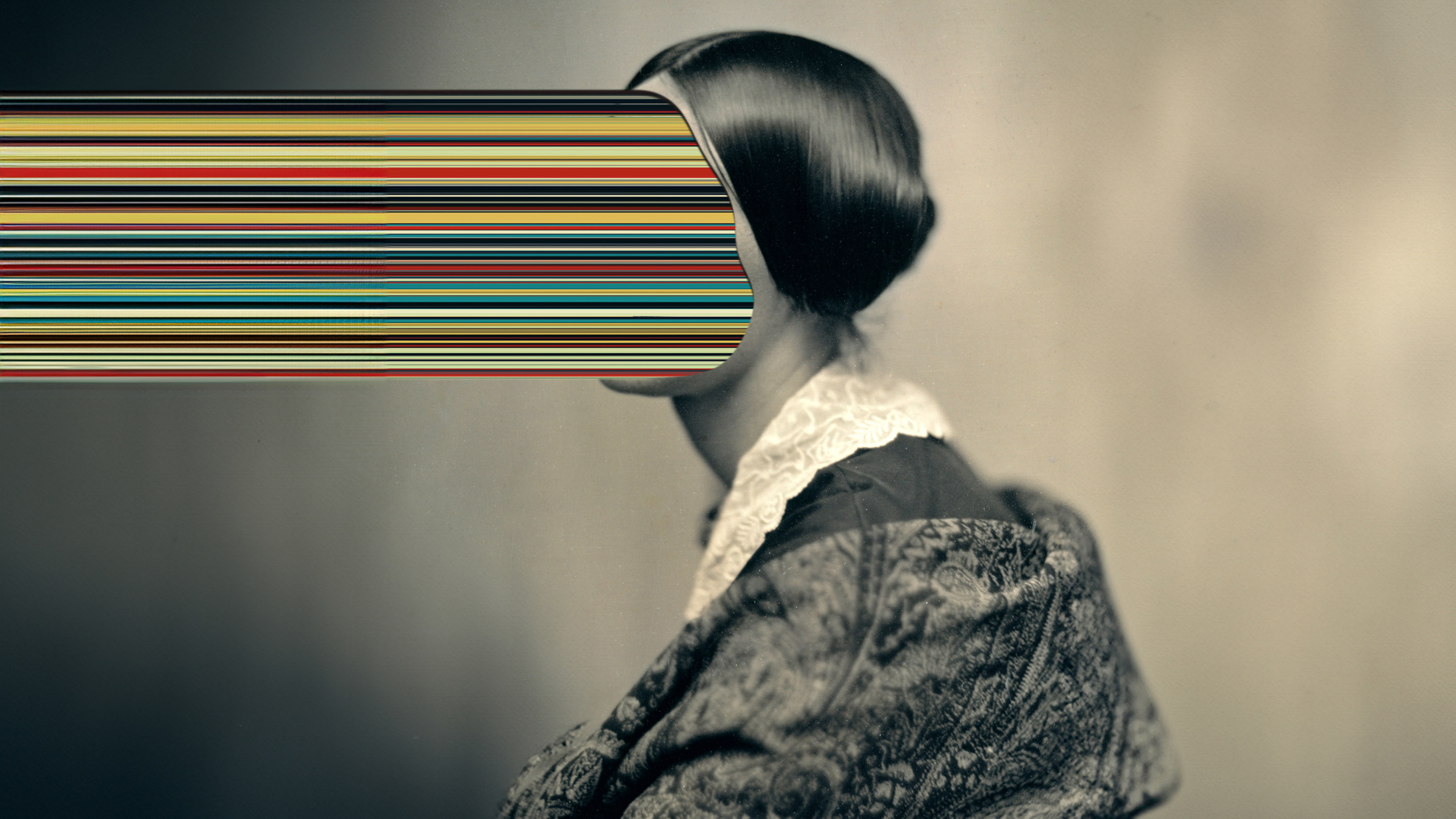This is MIT and yes, we have bananas
The Banana Lounge offers beanbag chairs, camaraderie, and a free, potassium-rich snack to students and visitors alike.
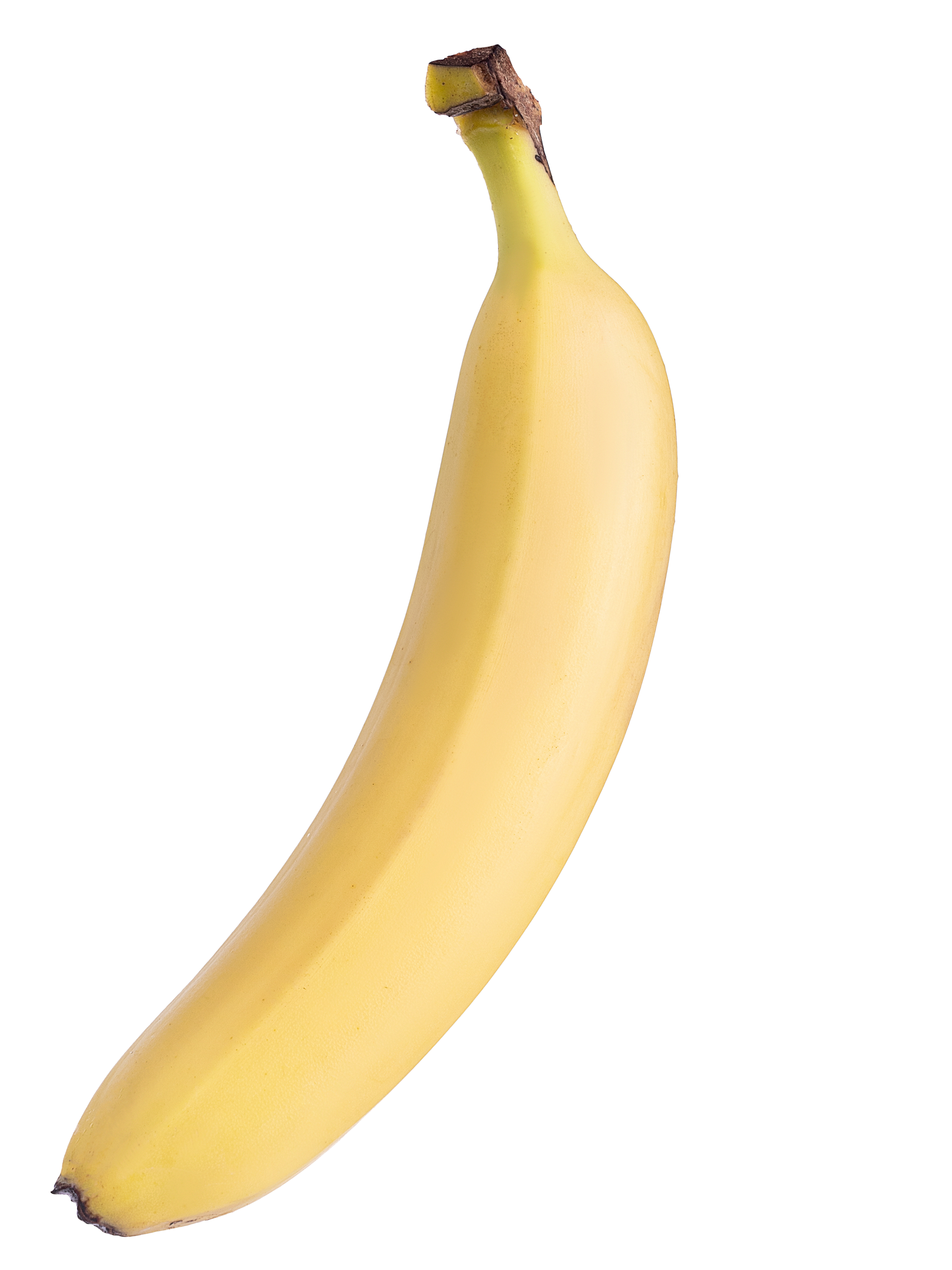
Attending lectures and movies in 26-100 has been an integral part of the MIT experience for generations of students, but since 2018 they have also embraced what’s become another quintessential Institute experience just across the hall: picking up a banana in 26-110, officially the Karl Taylor Compton Room but now better known as the MIT Banana Lounge.
Open 24 hours a day during the school year, the lounge is stocked with free bananas and hot drinks. At times the foot traffic is brisk enough to produce a detectable banana gradient on campus, centered on the first floor of the Compton Laboratories and marked by a stream of people with the fruit in their hands or backpacks.
Walk through the lounge door and you’ll discover beanbag chairs, Lego bricks, plants, walls decorated with student art, and a magnificent bank of floor-to-ceiling windows looking out onto the “Outfinite” (MIT’s North Corridor walkway) and MIT.nano. Banana boxes stacked three to six feet high sit on wheeled carts.
On a glorious mid-May afternoon, two students sift through the open boxes atop each stack, looking for fruit at the perfect point of ripeness. More people enter the lounge, head straight for the boxes, grab a bunch, and leave. Others take a single banana and sit down. Some just sit. The vibe is a mix of library, coffee shop, and grocery store.
Most of the students in the lounge are working together in small groups, but one in a hoodie is peering deeply into his laptop. “I’m here almost every day,” says Victor O. Ogunsanya ’27. “I recommend noise-canceling headphones.”
Another student walks over to the crates and starts to tidy things up. He consolidates three half-filled boxes into a single crate; then he removes the paper, plastic strips, and supports from the two boxes he’s emptied and flattens them. His name is Colin Clark ’26. He’s both president of the MIT Association of Student Activities and one of the lounge’s student volunteers.
As a volunteer, Clark says, one of his jobs is “to count how many bananas are left.” His tally isn’t very precise; he just reports the number of boxes, with full boxes counting as one and others as one-half. The broken-down boxes are typically donated to Boston Area Gleaners, which uses them to distribute food to the needy.
A few days after that May afternoon, a group of Harvard Business School students and assorted friends and family members swings by the lounge during a tour. Their leader, a recent MIT grad, takes two bunches of bananas from a box and passes them around.
“I’m amazed at how perfectly formed these are,” says one of the visitors.
I, too, take a banana from the bunch. It’s warm. “This is MIT,” I joke. “They are probably fresh out of the fabricator.”
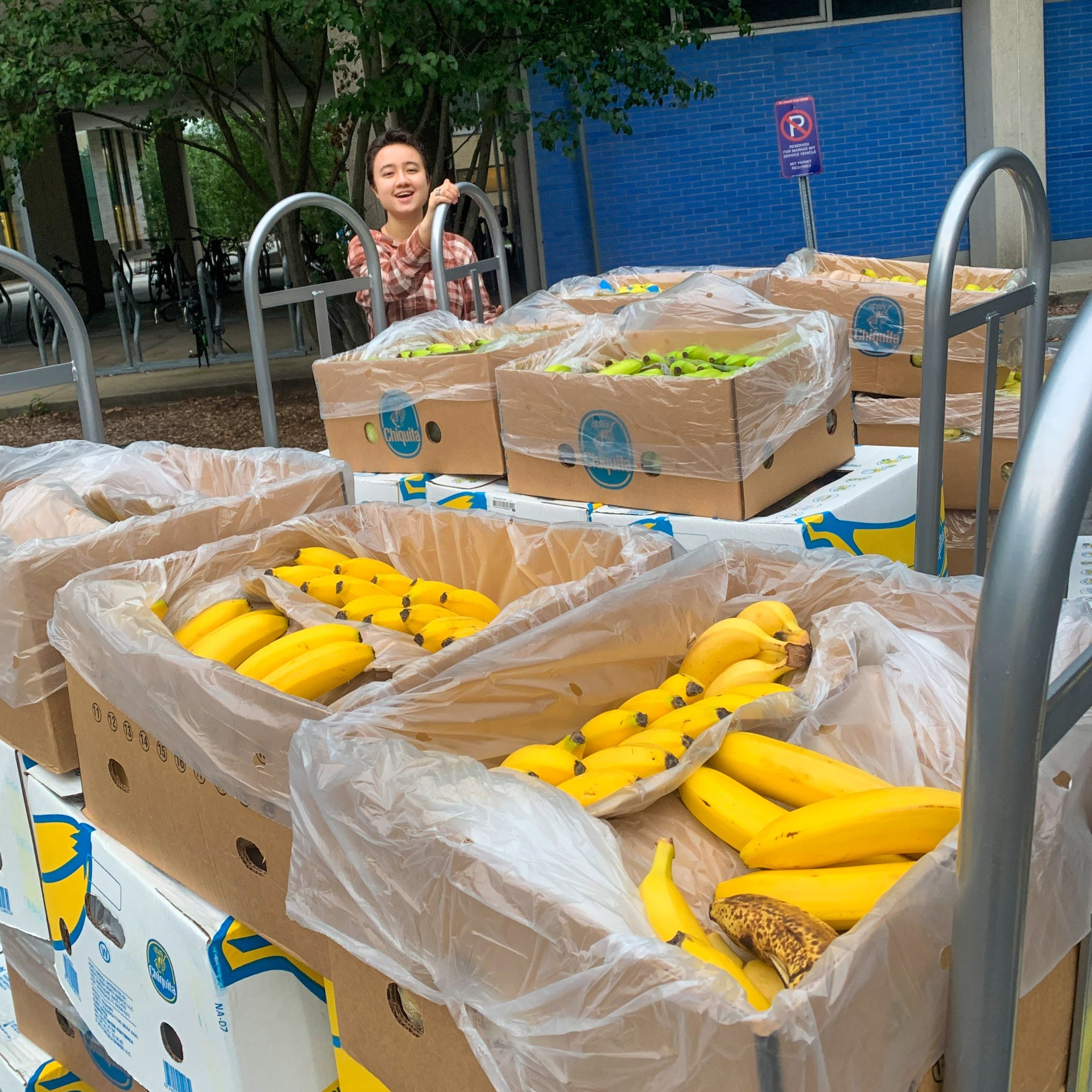

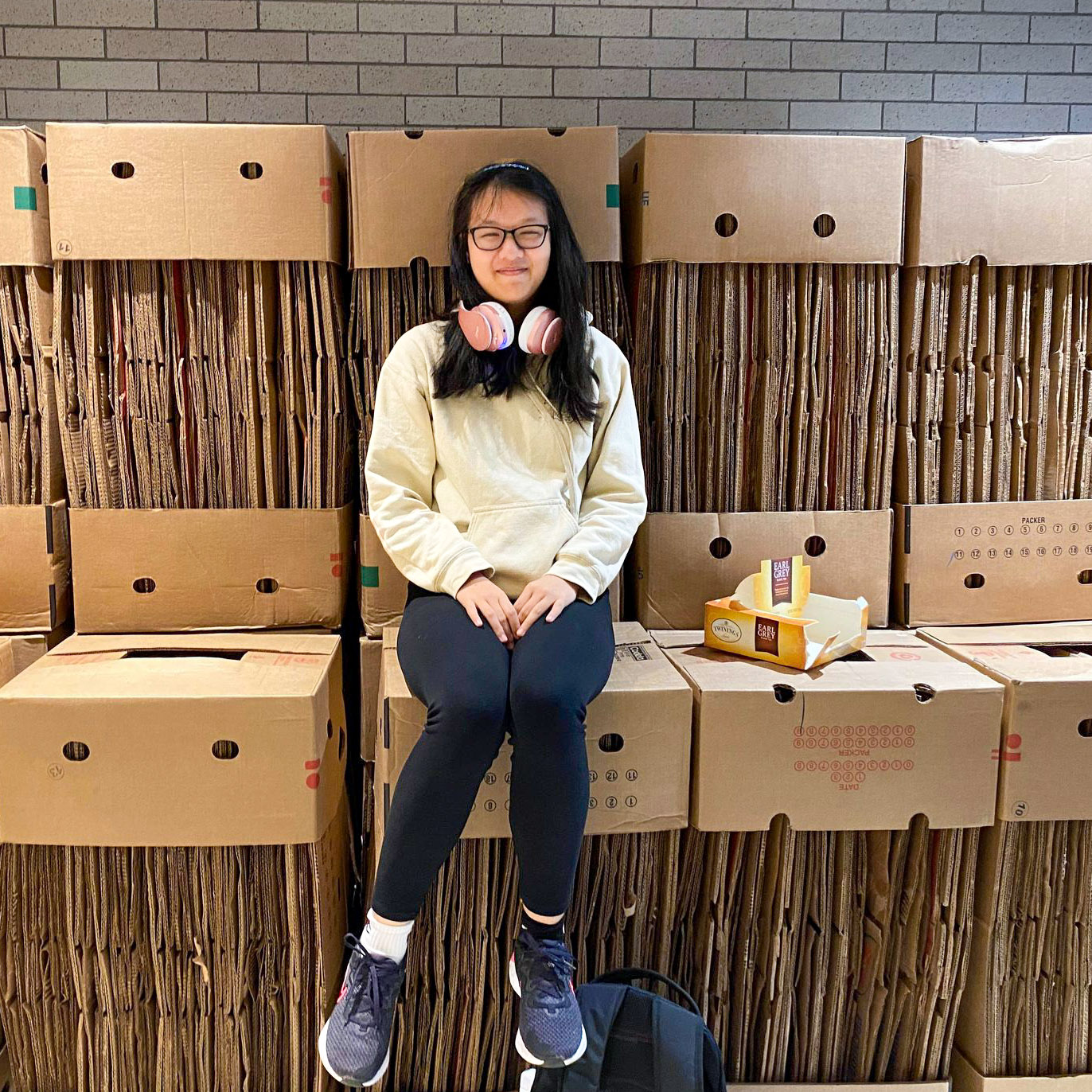
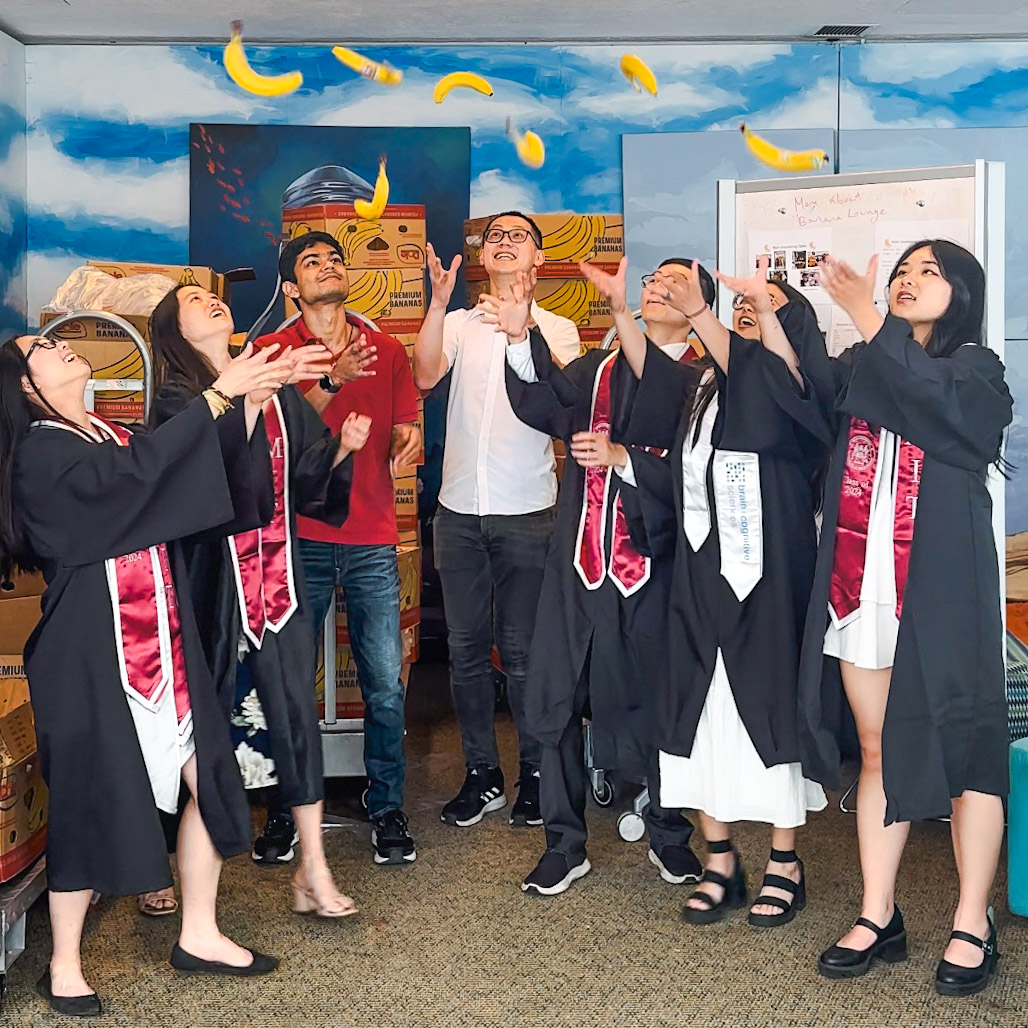
A student in a nearby chair hypothesizes that perhaps the fruit is warm because bananas are slightly radioactive. (He’s not the first to propose this theory. Clark had previously mentioned, “I was thinking that it would be fun to use a hypersensitive Geiger sensor and count the radiation coming from the bananas.”) We check the website of the US Environmental Protection Agency, which confirms that bananas are indeed among the most naturally radioactive foods, because of their high potassium concentration. The radiation level is minuscule, however, since the stable K-39 and K-41 isotopes account for most of the potassium in a banana; only about 0.012% is K-40, which has a half-life of 1.25 billion years. (The EPA website notes that you’d need to eat 100 bananas to roughly double your typical daily exposure to radiation in the US. )
In fact, bananas are warm because they are undergoing “exothermic ripening,” explains Banana Lounge cofounder Malte B. Ahrens ’17, who has become something of an expert on all things banana-related. The heat results from the conversion of starch into sugar.
Food insecurity affects a surprisingly large number of MIT students. For some the problem is money. For others, it’s time.
Ahrens, an undergraduate in mathematical economics who hasn’t quite graduated, Zoomed into the Banana Lounge in May to discuss its origins. (He was in Europe, studying the classics while on an academic leave.) He says that he, Katherine Nazemi ’17, and Willy Wu ’19 came up with the idea in 2015 when he was chair of the Undergraduate Association’s Innovation Committee.
The goal, says Ahrens, was to create a “comfortable, non-dorm hangout space” with the feel of a coffee shop or salon, ideally at the heart of the campus. In the past, students might have used the coffeehouse lounge on the third floor of the Stratton Student Center, but it was open only intermittently in the 2010s.
The Innovation Committee hosted meetings and design sessions, and by 2017 the concept included spaces where students could nap and get free nourishment, in the form of bananas and coffee.
Free food was critical because food insecurity affects a surprisingly large number of MIT students. For some the problem is money. For others, it’s time: “They choose to work rather than travel to the west side of campus to take advantage of dining options, and resort to informal options like free food in academic departments or skipping entire meals,” states a 2018 report by MIT’s Food Insecurity Solutions Working Group. That report found that 13% of MIT’s undergraduates and 2% to 8% of graduate students had trouble accessing food during the semester.
In the fall of 2017, the Innovation Committee submitted a proposal to the MIT MindHandHeart Innovation Fund to try out the banana lounge as a 12-week experiment. Their request: $3,600 for bananas, $150 for plates, $1,260 for newspapers, $3,000 for couches, $450 for 15 electric kettles, $480 for flowers, and $5 for labels, for a total of $10,385. But the proposal was rejected; the fund’s administrator had concerns about how the project would be sustained. Bananas are cheap—roughly 18 cents each when bought in bulk—but they aren’t free.
“The funding rejection in October 2017 hit us pretty hard, but we rallied afterwards and became stronger because of it,” Ahrens says. “It got us to look more broadly—engaging with faculty, especially, but also the Institute archives—and it ultimately motivated us to just try it as a short experiment. Some things need to be felt in order to be understood.”
What started as an idea for a lounge space offering free food became a serious research project. “We conducted a small literature review as a team—everyone reading a few reports, summarizing them, and presenting findings to the team,” says Ahrens. “We found that our desire for space to hang out (‘social space’) and vision for campus (architecture supporting innovation) wasn’t new … Most of the ideas have been around for a long time—at MIT, at least all the way back to [architect William Welles] Bosworth and the design of Walker Memorial. Execution is hard. And long-term sustainability even more so.”
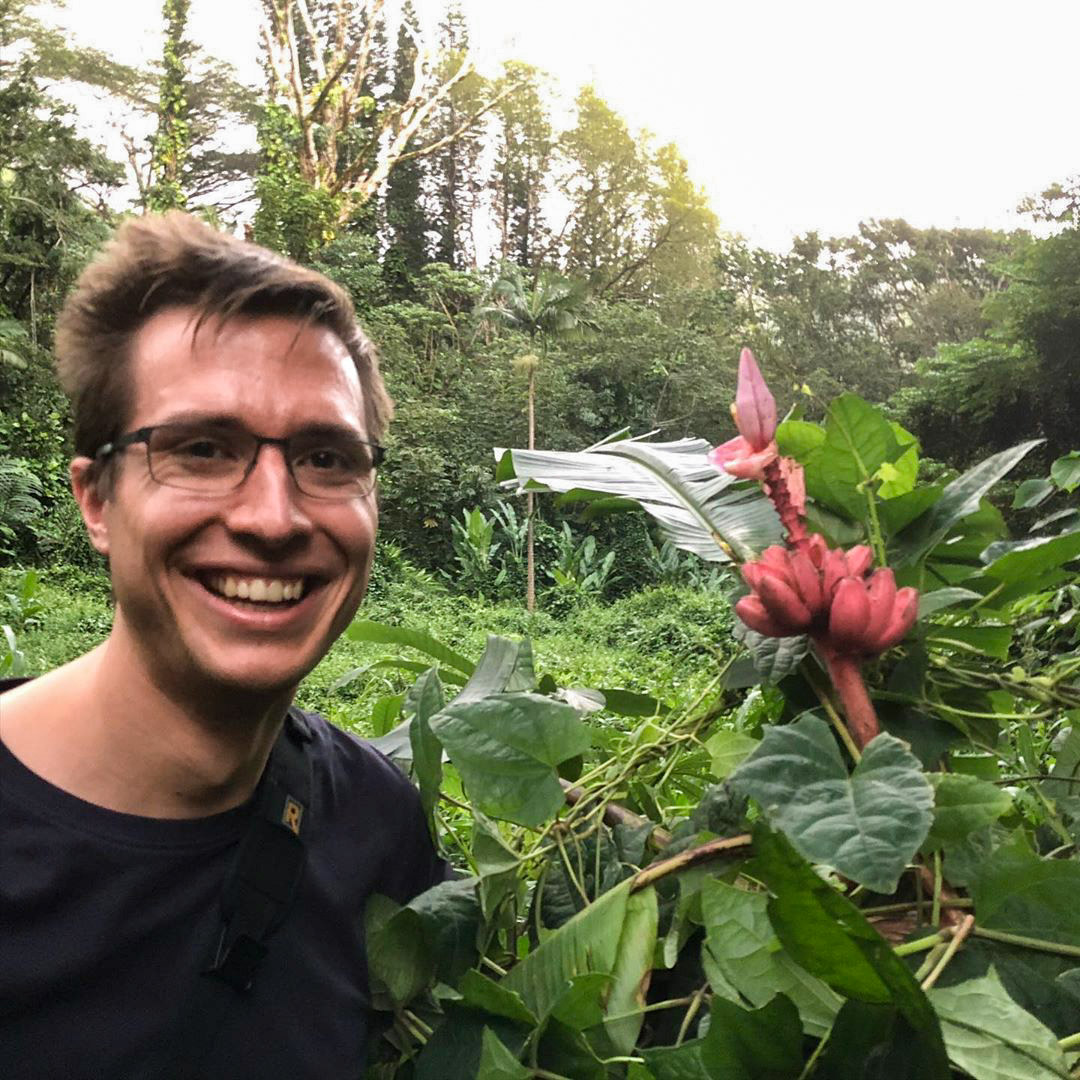
The team visited many spaces, interviewed MIT faculty (especially those who had also been students), and assembled a research package with 48 sources, including reports from visits to Harvard, BU, Georgia Tech, and Wellesley, as well as an examination of social space at 10 companies, including Google, Pixar, and Bloomberg.
With a little money in hand—a bit left over in the UA Innovation Committee budget and a small grant from the dean for student life, Suzy M. Nelson—the students then looked for a suitable space to test their idea. In February 2018 they discovered that the Compton Lounge was available. Formerly the physics faculty lounge and then a lounge for mathematics undergrads, it was open to all students, but its windows had been boarded up during the construction of the Lisa T. Su Building (MIT.nano) across the walkway.
The space seemed ideal for a weeklong pilot.
The students scrounged furniture from around campus and never got around to buying the newspapers. On April 4, 2018, they started giving out free bananas, tea, coffee, and hot chocolate. They also provided a Lego set and beanbag chairs for downtime between classes.
The pilot was such a success that Nelson authorized an additional $1,000 out of her discretionary fund to help the Banana Lounge keep operating through the end of the semester.
The lounge remained open through May 25, distributing 10,000 bananas and 5,000 drinks. Over those seven weeks, members of the UA Innovation Committee and other student volunteers checked on the lounge more than 330 times to monitor usage and record banana levels. The total cost was $2,300 in capital expenses and $3,000 for operations, paid for by the UA Innovation Fund and the $1,000 grant from Nelson.
The MIT faculty’s Committee on Student Life toured the lounge, after which it endorsed the pilot in its annual report to MIT’s president as “a shining example of what our undergraduate students can accomplish on their own to enhance their common spaces on an extremely modest budget.”
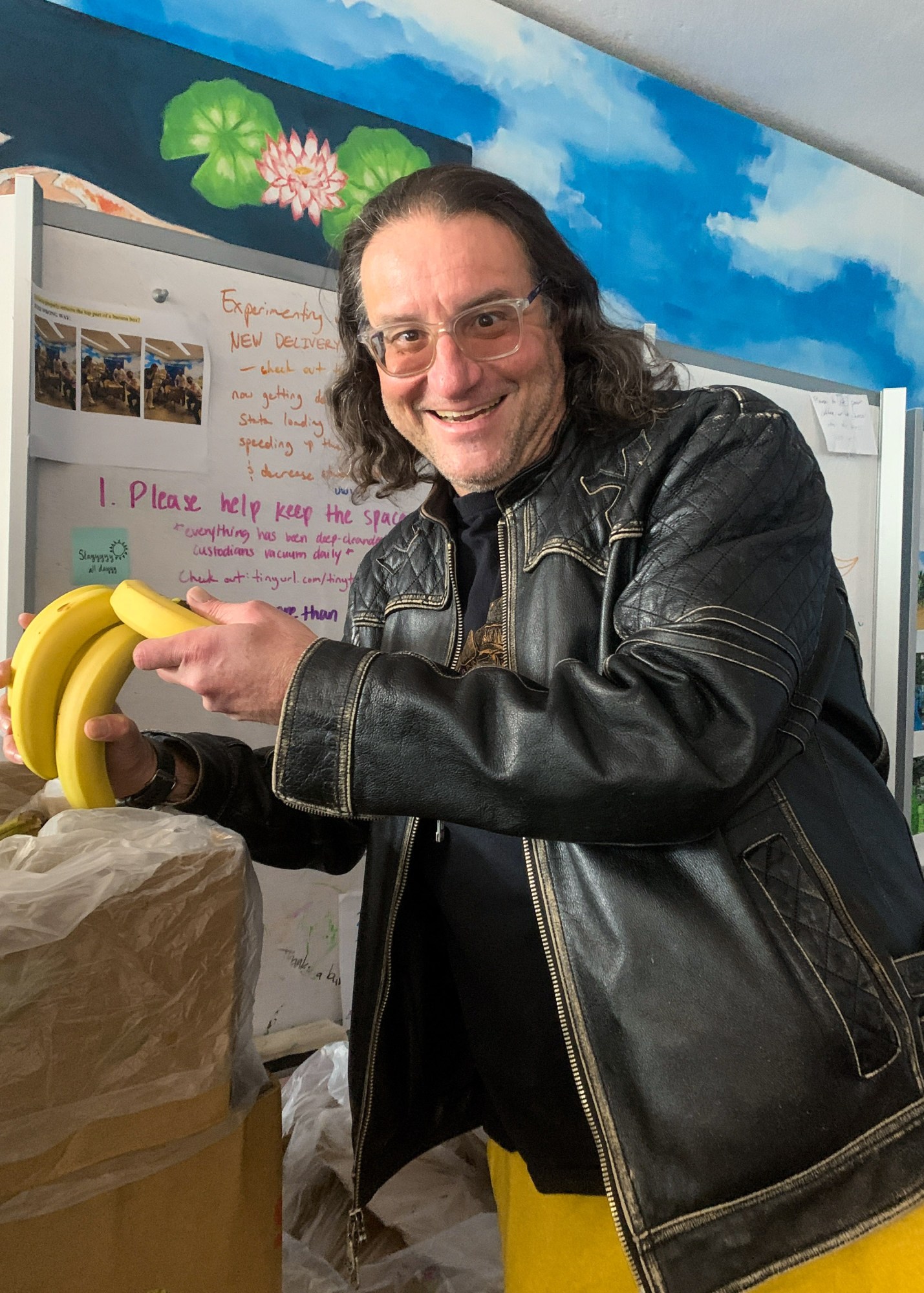
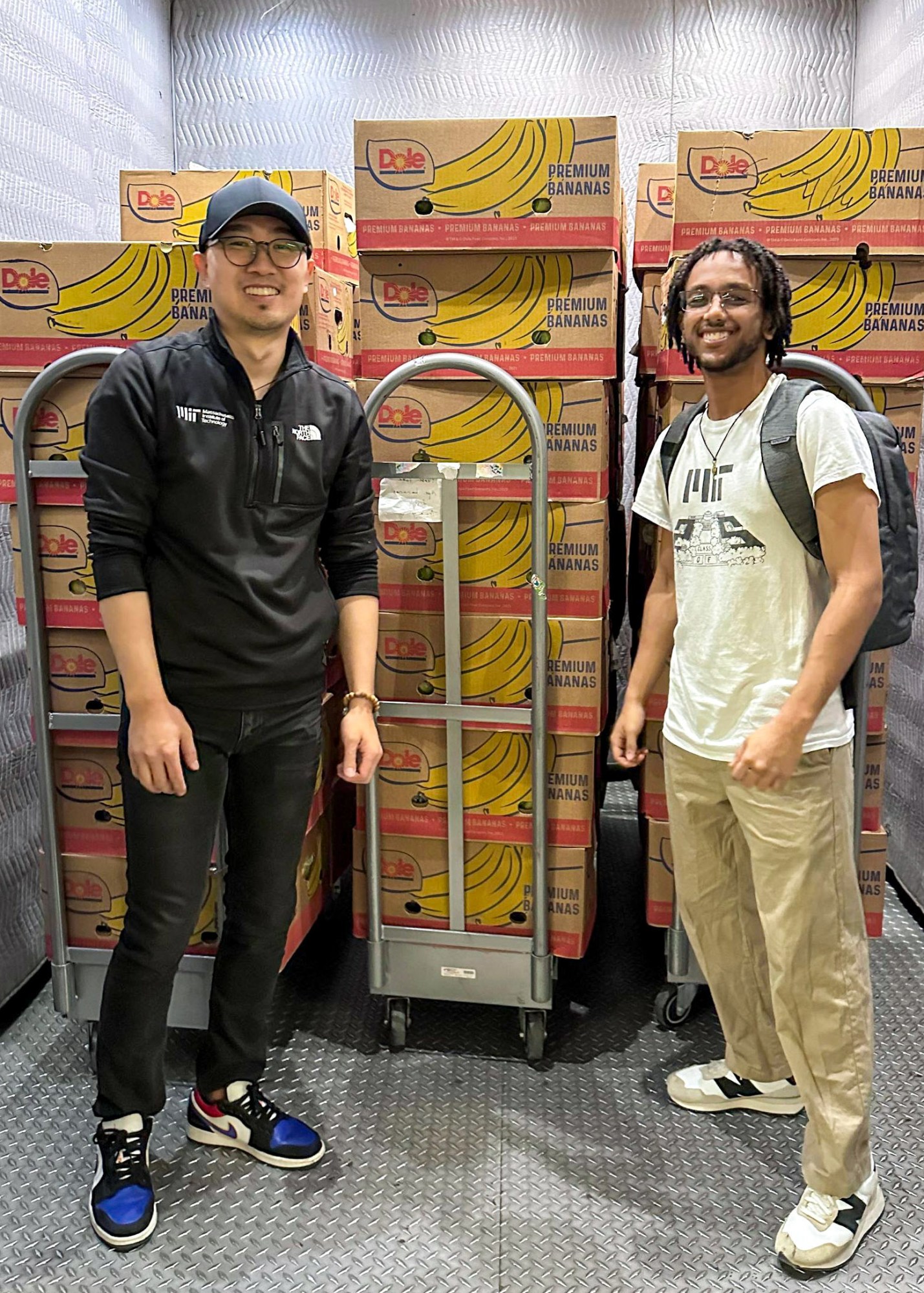
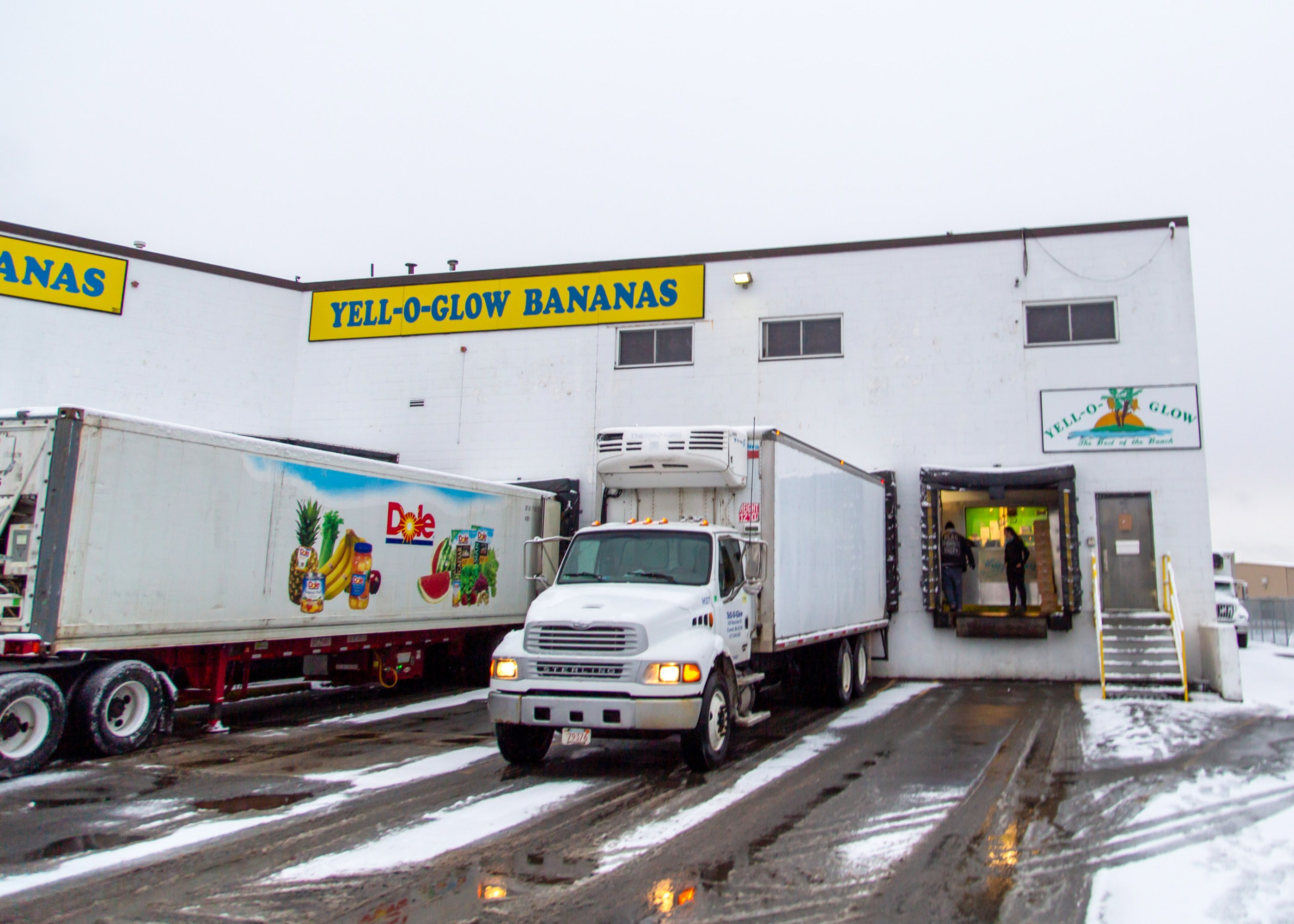
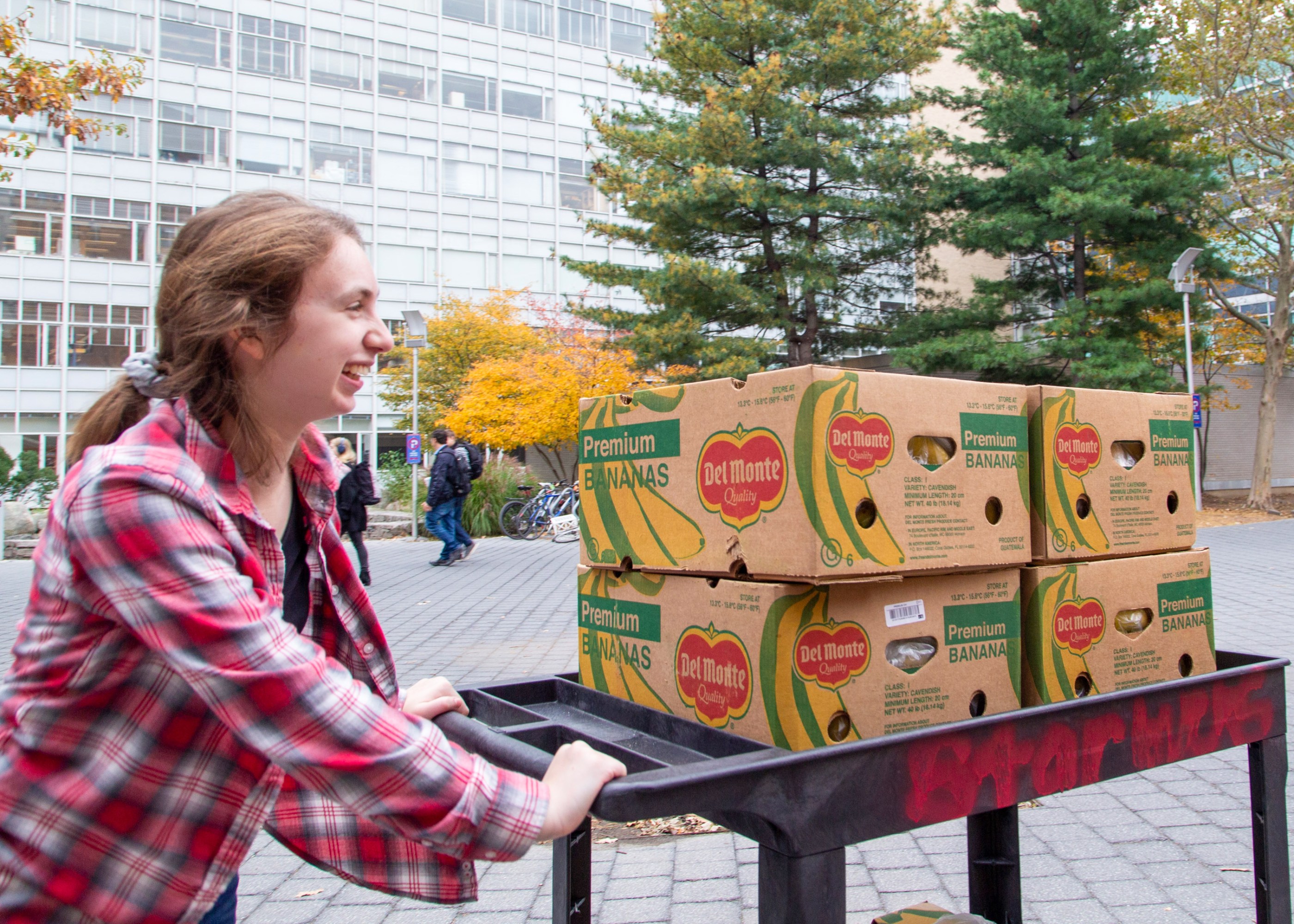
Early on, students ran to the Yell-O-Glow banana-ripening facility in Chelsea (even during snowstorms!) and Ubered back with boxes of bananas. Then they ordered them from MIT Dining, and team members like Nicole Teichner ’22 got them to the lounge
The Banana Lounge reopened that fall—without the plywood on the windows—and flourished over the next three semesters with support from the UA’s innovation fund and small donations from students, alumni, and parents. In May 2019, MIT’s Borderline art collaborative unveiled a gallery of original student paintings hung along the lounge’s main wall atop a student-created mural of clouds. The lounge even acquired a spinet piano, which is parked in the hallway outside, so it’s now common to hear live music when classes aren’t in session in 26-100. MindHeartHand at one point ran a series of weekly events in the lounge, such as seminars on exercise and health, and it occasionally supplies free cupcakes.
In the fall of 2019, the lounge gave out nearly 100,000 bananas.
On March 8, 2020, Rylan Schaeffer, who was then completing a master’s at Harvard and working on research in a lab at MIT, mentioned the campus “banana gradient” on his blog. (Now a PhD candidate in AI at Stanford, Schaeffer remembers the lounge fondly. “As someone paying an expensive tuition with little income to pursue a future in academia, I was very appreciative of free food wherever I could find it,” he recalls.)
The following day, MIT started postponing and canceling events in response to the covid pandemic. Shortly thereafter the lounge was closed.
In the fall of 2021, the Banana Lounge was allowed to reopen from 6 a.m. till 2 a.m. Students advocated for round-the-clock banana access, which was finally restored in September 2022. But a bigger problem was paying for all those bananas. In the spring of 2021, as the students were preparing to reopen the lounge, Ahrens had realized that it would take a fifth of the entire UA budget to satisfy the growing demand for free bananas, coffee, and tea.
That’s when Zoe Sheill ’24, then a first-year student, remembered that she had met Brad Feld ’87, SM ’88, a venture capitalist and philanthropist, during her high school internship at Pioneer Square Labs in Seattle. She reached out to Feld, asking if he could help.
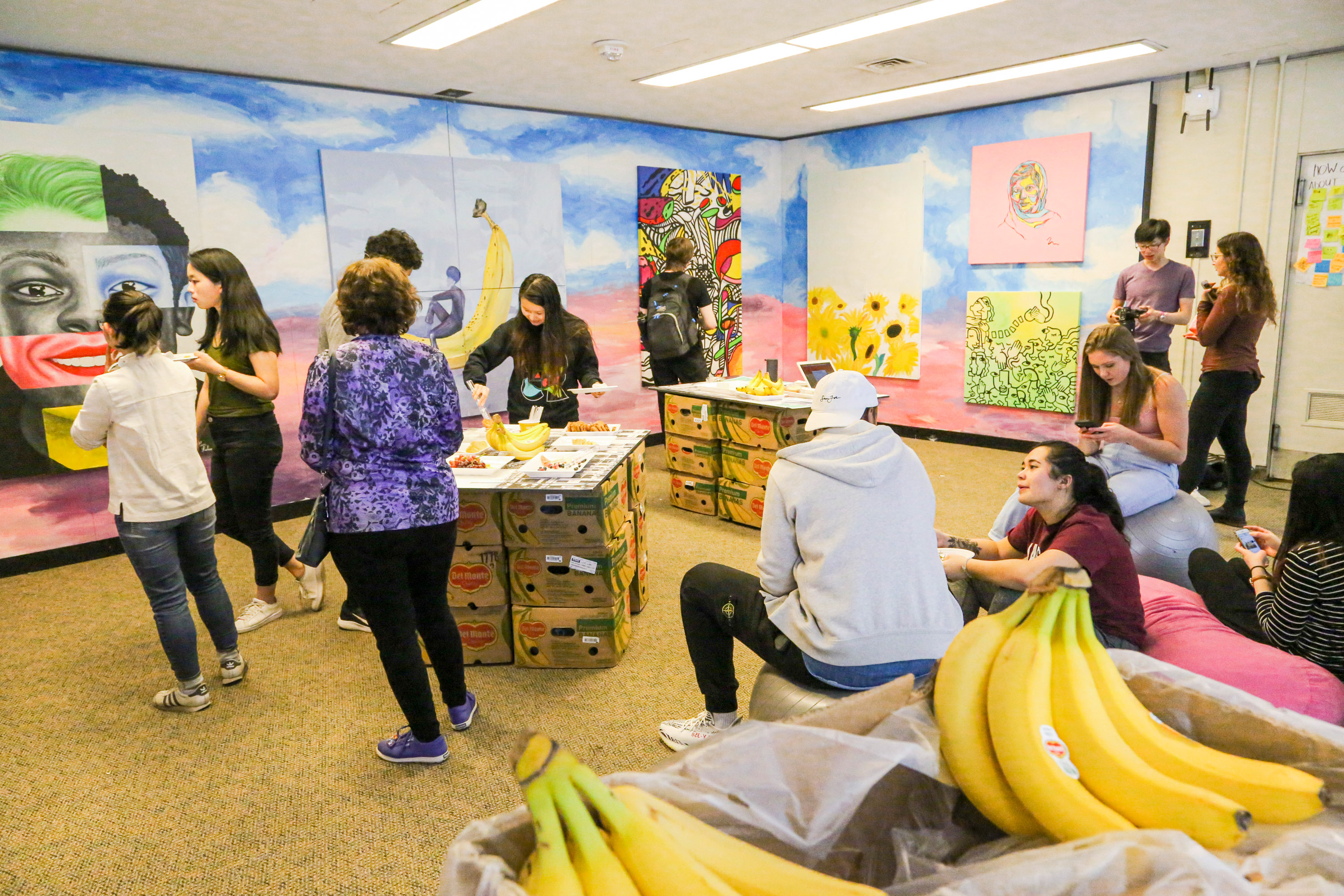
Feld was excited by the idea. “I have always loved bananas,” he says. “My default breakfast is whole wheat toast with peanut butter and banana slices. I also have a secret love for frozen chocolate-covered bananas. Plus, I’ve always thought of myself as somewhat bananas.”
Feld covered most of the cost of the bananas for the 2022-’23 school year, with the UA and the Division of Student Life providing additional funds. The following year Feld persuaded his ADP fraternity brothers Eran Egozy ’93, MEng ’95, and Alex Rigopulos ’92, SM ’94, the inventors of Guitar Hero and cofounders of Harmonix Music Systems, to begin supporting the lounge as well. (Egozy is also a professor of the practice in MIT’s Music and Theater Arts Section.) Still more alumni kicked in funding for 2023-’24. Now it is even possible to donate to the Banana Lounge through the giving.mit.edu website.
The lounge celebrated its fifth anniversary in April 2023 by distributing its millionth banana.
“The Banana Lounge is fundamentally an entrepreneurial endeavor,” Feld says. “I think any support MIT gives to the Banana Lounge is excellent, but it has to be student led to be successful. Many of the best things I experienced at MIT were student driven. Ultimately, I don’t think the funding is the issue, but rather the continued leadership by the students who run the Banana Lounge, which will naturally evolve over time.”
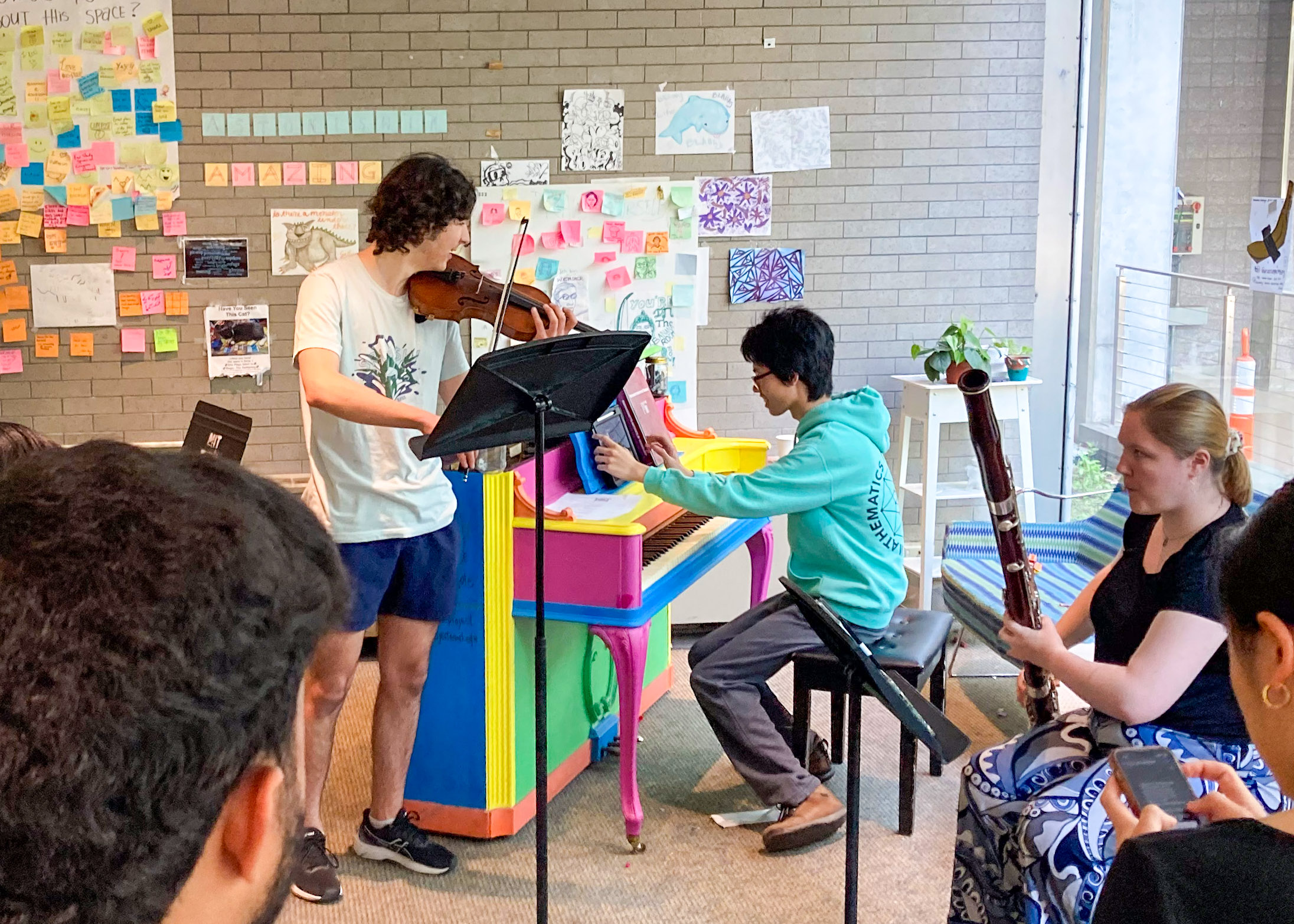
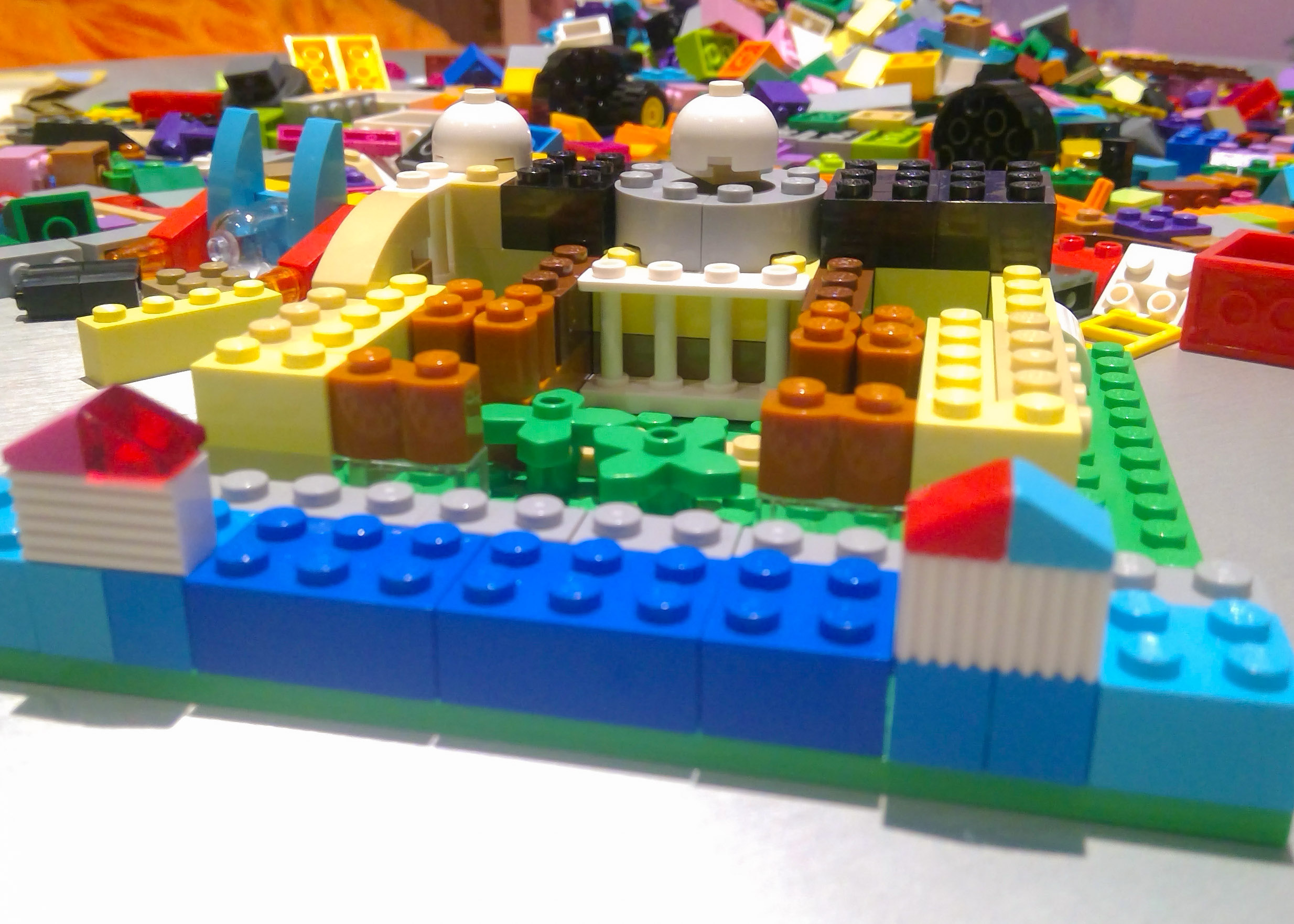
In 2019, the student artists of MIT Borderline painted a mural and created original artwork for the Banana Lounge’s quiet area, which gives students a place to rest and relax.
President L. Rafael Reif gave a shout-out to the Banana Lounge in May 2022 in his last presidential charge to the graduating class. “In its charming quirkiness, the Banana Lounge is ‘very MIT,’” Reif said. Then he ticked off an impressive (and MIT-like) list of reasons for its success: students prototyped the lounge and tested it in real-world conditions, analyzed multiple fruits and supply chains to minimize cost, tracked and calibrated environmental conditions for the fruit, secured funding from Feld, and “developed the cutting-edge concept of ‘free coffee.’”
“Already, the lounge has served more than 500,000 bananas—two of which were mine,” Reif said, noting that he prefers mangoes.
In November 2022, Admissions blogger Amber Velez ’24 proclaimed the Banana Lounge the fourth-best place to sleep on campus. It beat out the Hayden and Barker libraries but was bested by the Course [x] Lounge (where x is any integer from 1 to 24), “your empty classroom after recitation,” and “your 9 a.m. class.”
The lounge remains entirely student run, although MIT does provide cleaning services. In 2018, students would lace up their sneakers and run to Yell-O-Glow, a giant banana-ripening facility in Chelsea, to pick up full crates and Uber them back to campus. At one point they got bananas from MIT dining halls, which also sourced from Yell-O-Glow through a produce supplier; while that was convenient, adding two layers of middlemen resulted in significant bruising (affecting 5% to 20% of bananas) and more waste. But consumption has since increased enough to support a separate order to Yell-O-Glow. Students email their order by midnight three times a week, and by around eight the next morning, the company delivers 40-pound 100-banana crates to the Stata loading dock. The students get the pallets from there to the lounge, taking great care to minimize bruising.
Ahrens says it’s been critical to optimize the supply chain, which extends 3,000 miles to Central America and spans a couple of weeks from harvest to lounge. They’ve focused their efforts on the final days and miles, he notes. Their top priority is reliability—providing students 24-7 access to bananas—and they aim to maximize quality as they minimize waste, cost, and student labor, all while dealing with the constraints of the lounge’s limited space and the speed at which bananas ripen (which is temperature sensitive).
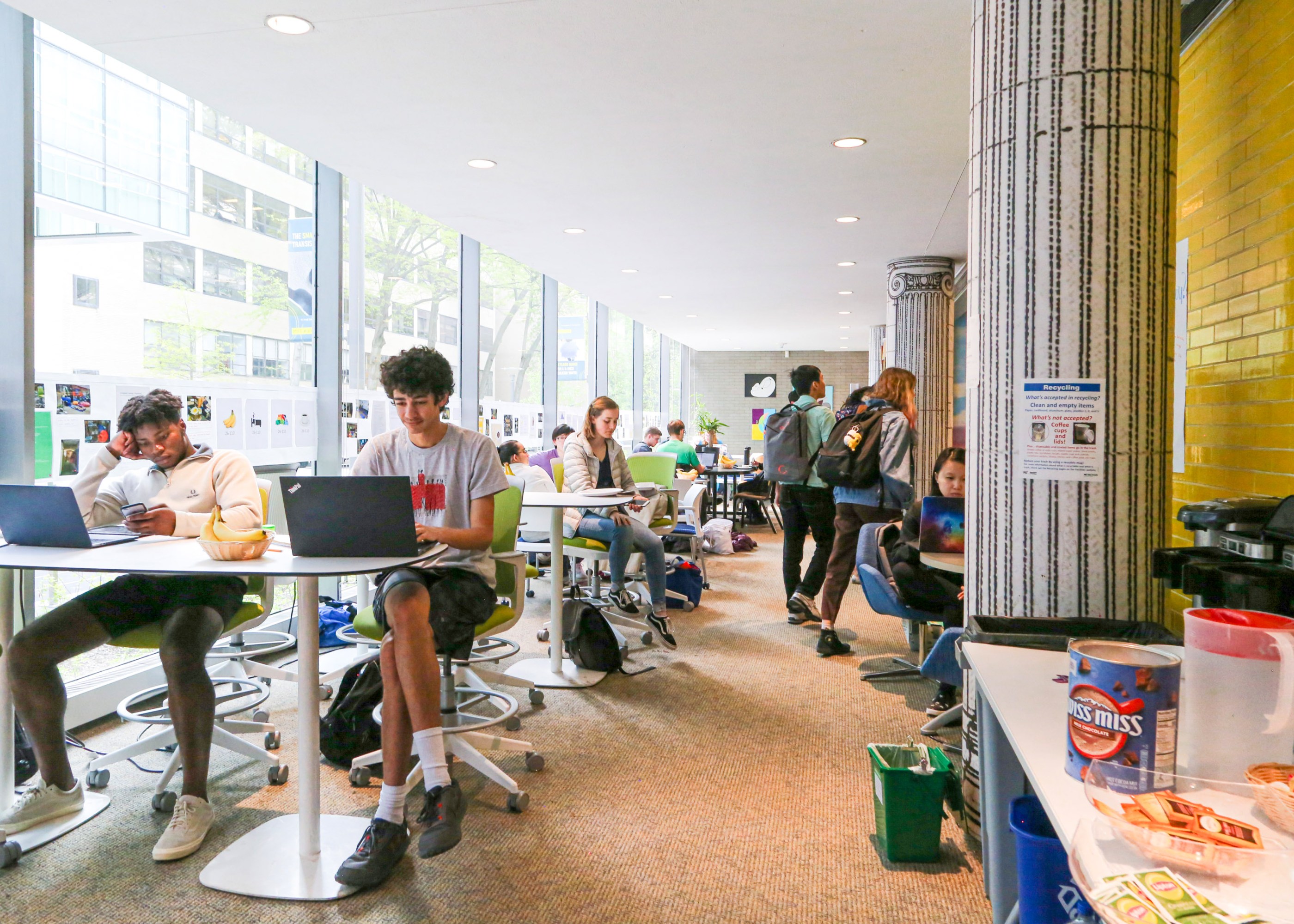
The Banana Lounge team has collaborated with experts from the likes of Del Monte and AgroAmerica; Ahrens and Thérèse Mills ’21 even flew to Central America on a mission to trace the banana supply chain from planting, picking, cutting, cleaning, packing, shipping, and ripening all the way through delivery to the lounge. “But our greatest teacher has been necessity and learning from our mistakes along the way,” says Ahrens. They’ve had to deal with under- and overripe bananas, too many and not enough, unexpected campus events, snowstorms, missed deliveries, AC failures, and cold damage in the winter, to name a few challenges.
“We have great data,” says Ahrens. “Every delivery we’ve ever had has been logged (594 deliveries) with notes on quality, ripeness, company, and country of origin, and we check in on the space three times a day on average, logging banana levels and busyness, among other data points. From this we can predict with decent accuracy consumption at any hour and track recurring issues to raise with Yell-O-Glow and/or the banana companies. For example, when there was an issue with bananas splitting, we were able to alert that banana company and, with them, trace it back to an issue they had unloading at the port.”
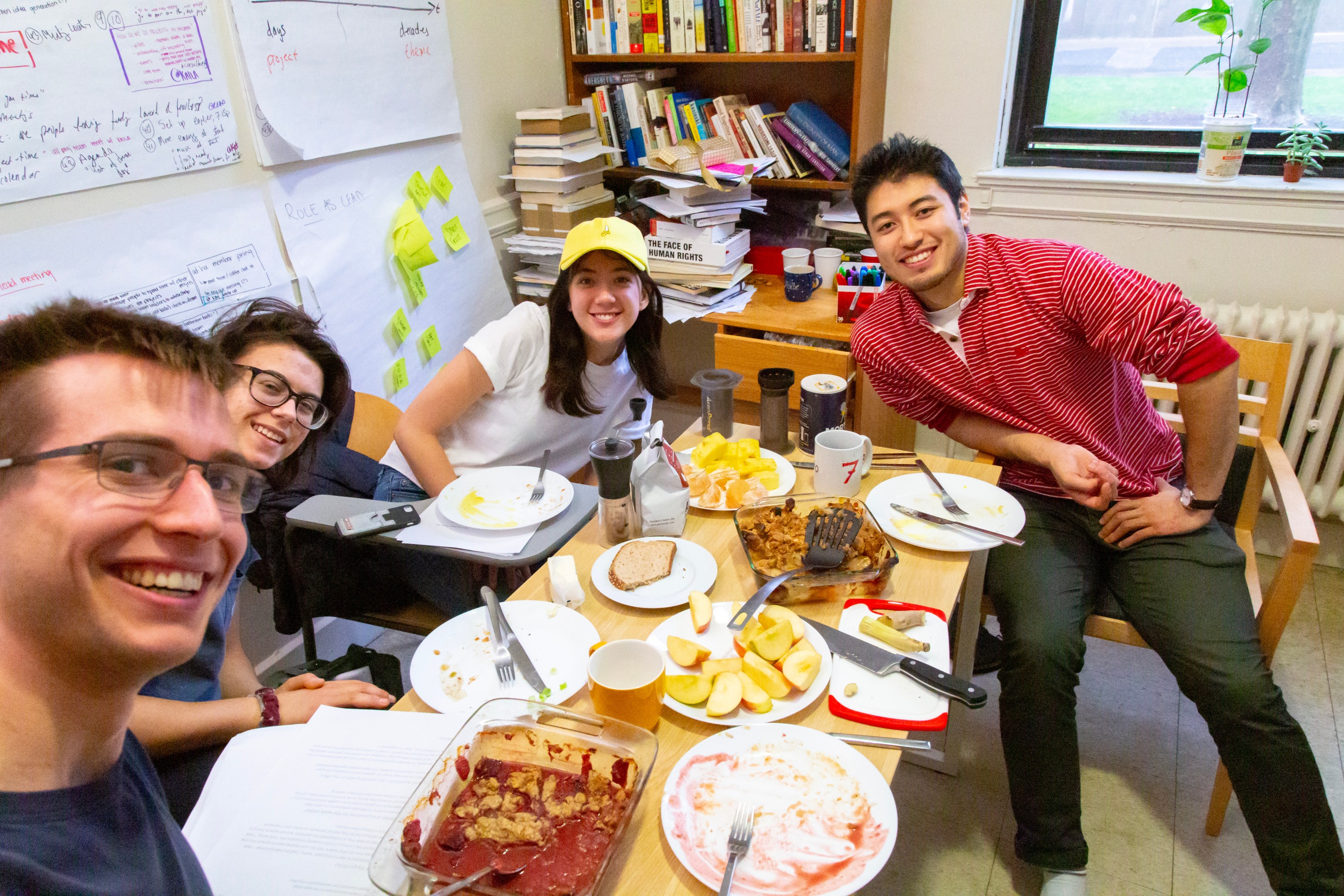
But even with all that data, intuition is critical, Ahrens says, noting that “banana demand is elastic in several ways.” For instance, the ripeness of the stock plays a role, and if the supply dwindles, a scarcity effect boosts demand.
In 2023, the UA’s Food Security Committee found that food insecurity had dropped slightly since 2017 but still affects more than 10% of MIT undergrads.Its 2023-’24 report makes clear that the Banana Lounge is helping students who would otherwise be skipping meals. “If I forget to pack lunch, I can’t really afford to eat on campus,” reported one student responding to the UA survey. “Going back home takes time since I live off campus, so I often just resort to bananas (banana lounge) and S^3 bars [from Student Support Services].”
The lounge celebrated its fifth anniversary in April 2023 by distributing its millionth banana; by May 2024, the total count had jumped to 1.9 million. The Banana Lounge team expected to hand out roughly 800,000 bananas in the 2023-’24 academic year, with a validated waste rate (as reported by student volunteers) of 0.47%, although the actual waste is likely twice that. But even a 1% rate is remarkable, considering that bananas are among the leading causes of supermarket food waste because consumers just won’t buy them if they have brown spots.More than 5 billion bananas are discarded in the US every year, according to Dana Gunders of the Environmental Law Institute. Asked how the Banana Lounge keeps its waste level so much lower than grocery stores can manage, Ahrens says: “Because we obsess over it.”
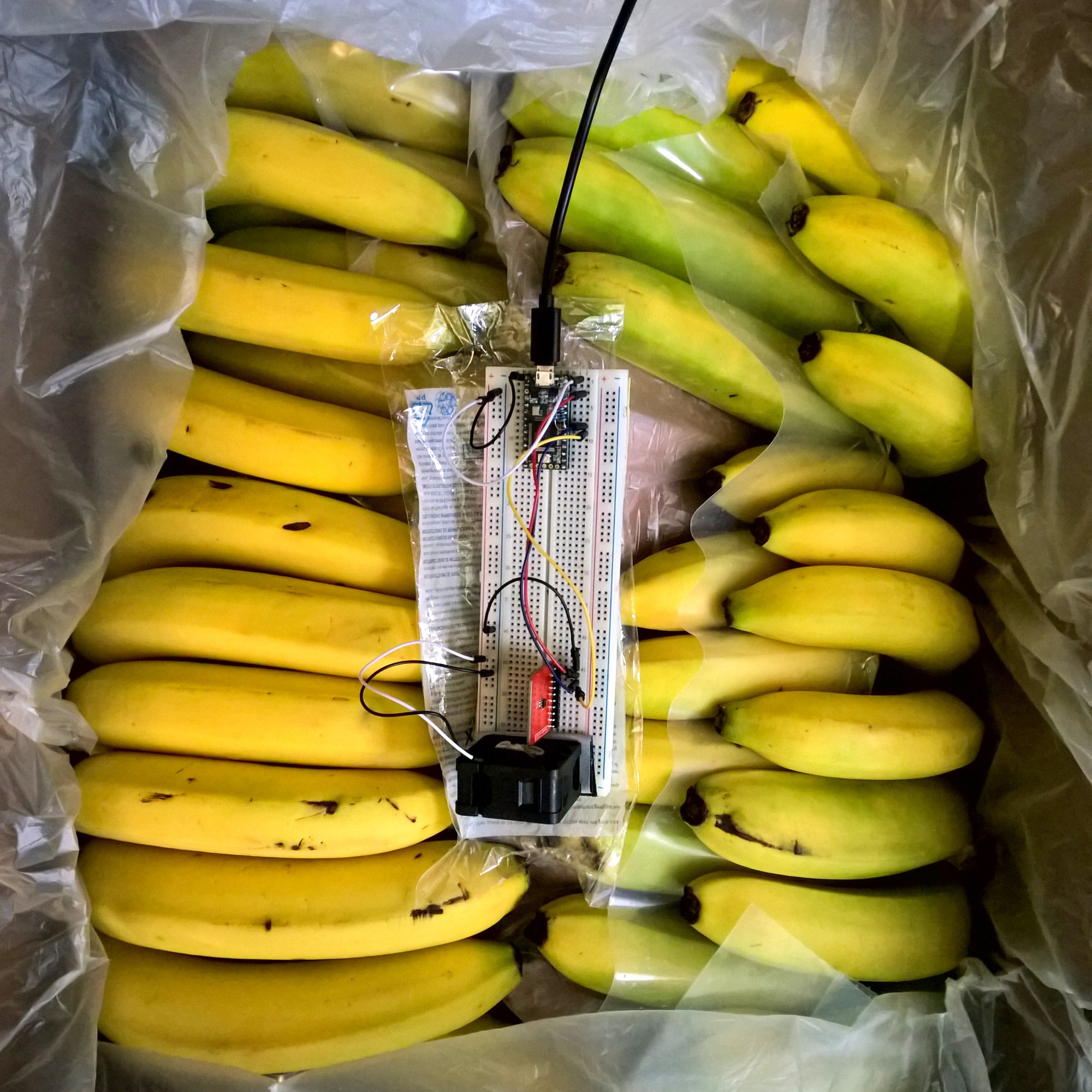
All told, the lounge has served 359.3 metric tons of bananas in the 27,120 hours it has been operational—and has had bananas in stock 98.52% of the time it’s been open since September 2021. In its quest to keep improving, the Banana Lounge team is looking into collecting better data, improving ventilation, and further reducing student labor. But the main focus remains providing bananas 24-7. Or, as Ahrens puts it, “always, always being there for students.”
“The lounge is more than just the bananas,” he says. While bananas draw students in, they also keep them there long enough to bump into other people. “It’s a place to study, rest, play, create, run into friends, chat, and collaborate with others on wild projects,” says Ahrens. “We believe a good commons can bring people together and make a difference.”
Keep Reading
Most Popular
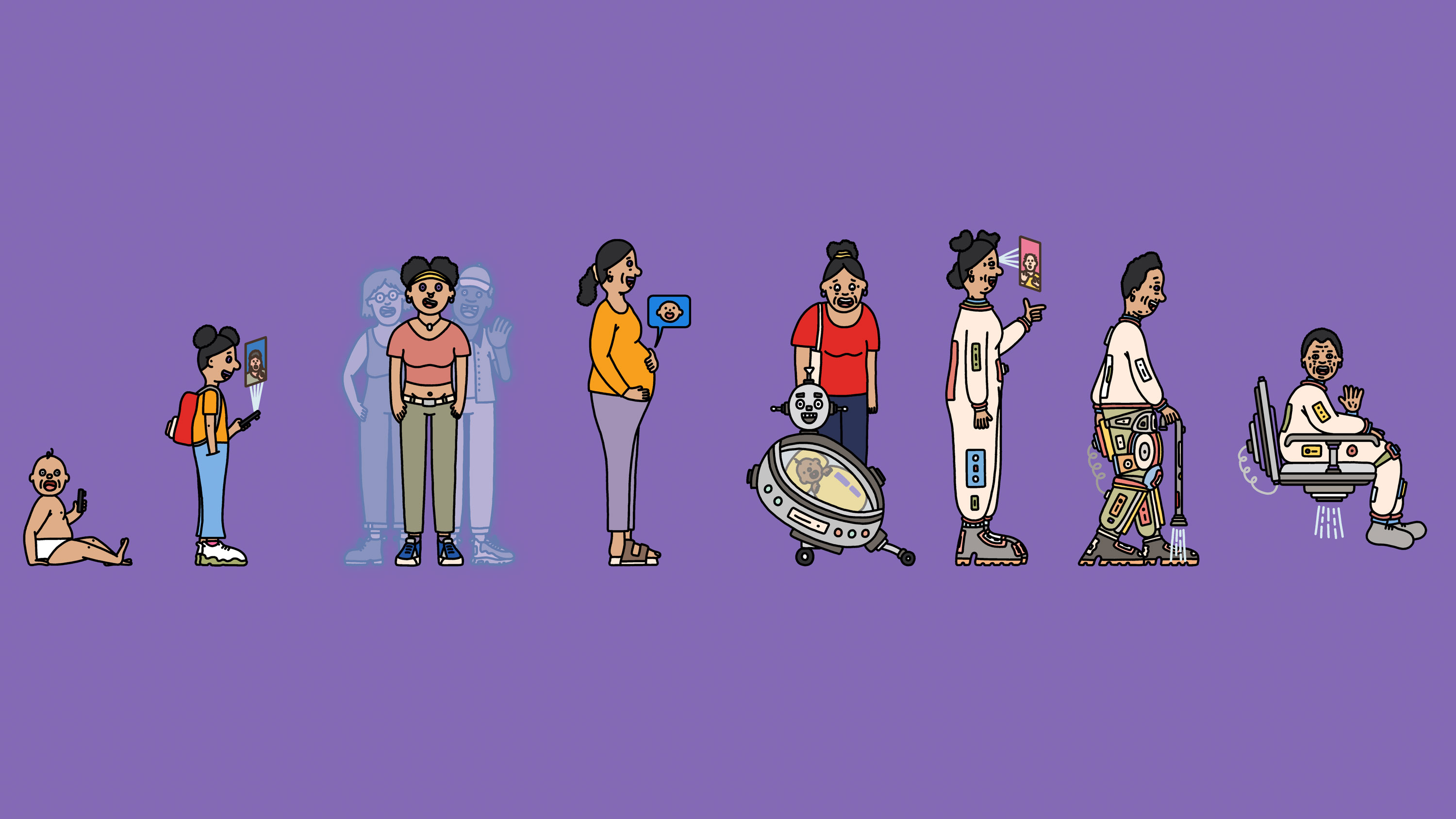
Happy birthday, baby! What the future holds for those born today
An intelligent digital agent could be a companion for life—and other predictions for the next 125 years.
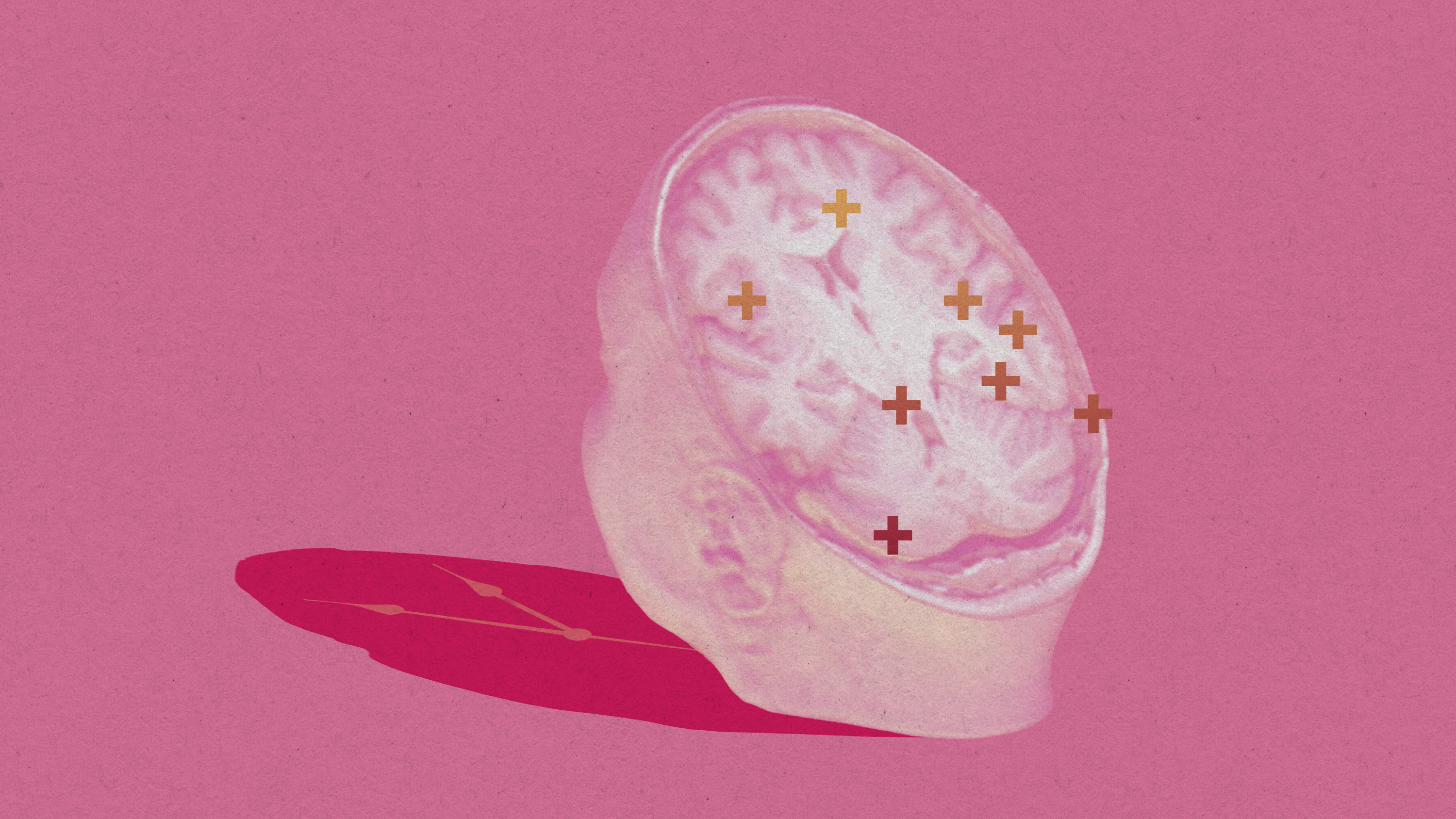
This researcher wants to replace your brain, little by little
The US government just hired a researcher who thinks we can beat aging with fresh cloned bodies and brain updates.
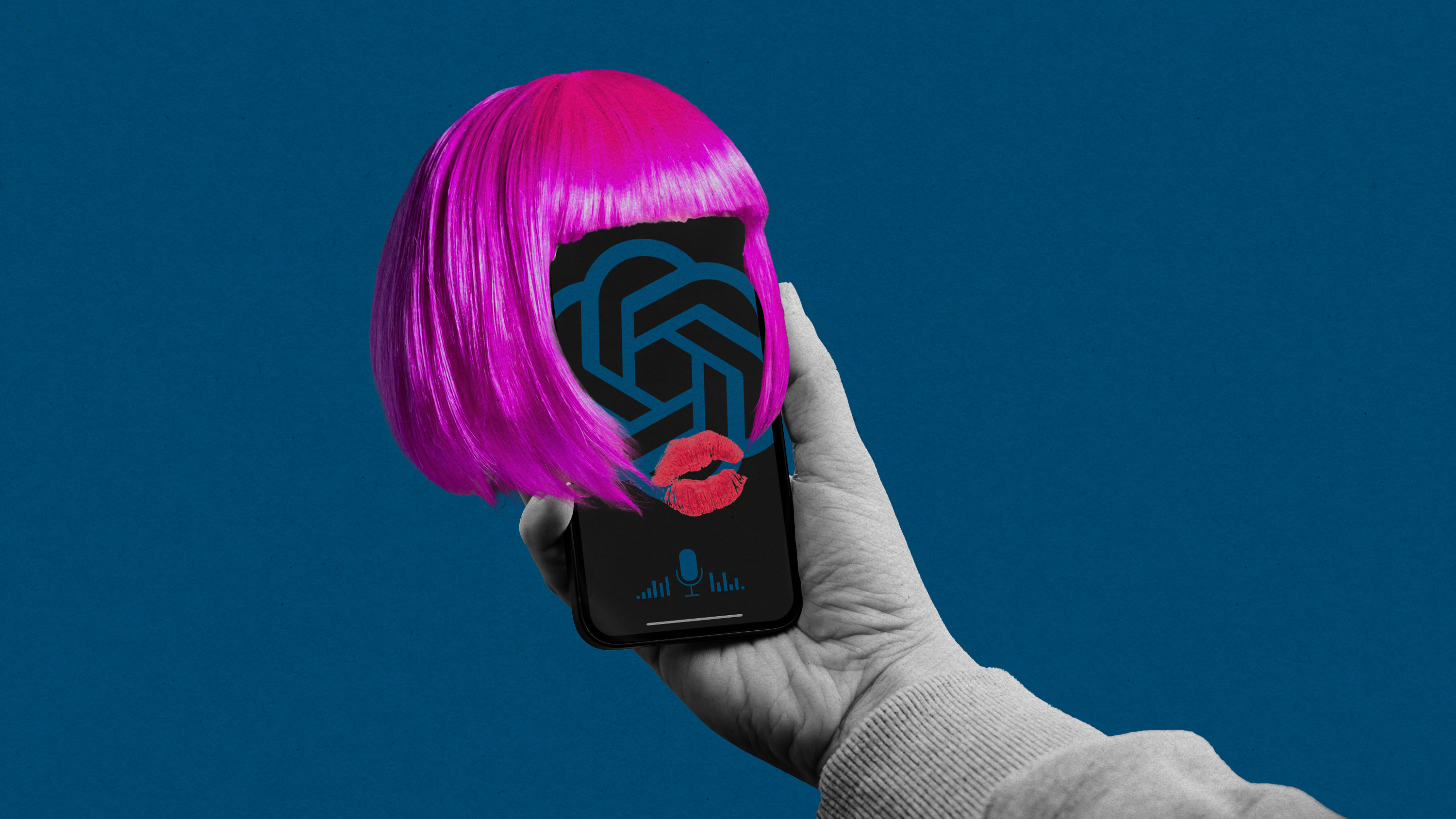
Here’s how people are actually using AI
Something peculiar and slightly unexpected has happened: people have started forming relationships with AI systems.
Stay connected
Get the latest updates from
MIT Technology Review
Discover special offers, top stories, upcoming events, and more.
